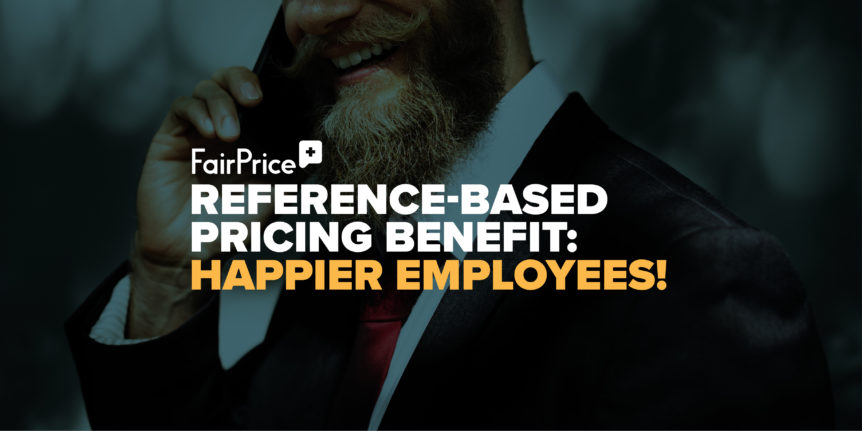RBP Benefit 3: Happier Employees
Health benefits significantly affect how employees view their compensation packages, but the cost of traditional health insurance is often too much for employers to bear. In order to meet employees’ expectations for health insurance and still run a financially viable business, employers frequently shift some health care costs to employees. This almost always upsets employees, as human resources representatives can attest to. Reference-based pricing is a different model that can help solve this problem, and reduce how many complaints HR representatives hear about the cost of health insurance their employers offer.
Want to save 30% on your healthcare?
Download our brochure to see:
How American insurance is broken
Who FairPrice Is
How we can help
(This is the third in a seven-part series on the benefits reference-based pricing has for human resources representatives.)
The Old Way: Employees Hate Paying High Health Insurance Premiums
When employees are promised health insurance during a job interview or onboarding process, they expect their new employer to pay most of their health insurance plan’s premiums. When an employer shifts a significant portion of the costs to employees, employees often feel betrayed. They can feel unappreciated by their employer, and they may even get mad at the human resources representative who initially promised them health insurance but didn’t fully delineate their portion of the cost.
Not only do employees feel angry and betrayed, but they also frequently become frustrated. Traditional health insurance is an opaque industry, and few employees understand why their health insurance costs are what they are. Without a clear explanation of why they pay the premiums they’re charged, health insurance can exacerbate employees more than it appeases them.
The New Way: Reference Based Pricing Offers Lower Costs and Transparency
Reference-based pricing directly addresses the cost problems that come with traditional health insurance plans in two ways.
- First, reference-based pricing offers lower overall costs for both employers and employees. By introducing cost comparison tool for employees to use, RBP plans force providers to competitively price their services. This drives down healthcare costs, which is something both employers and employees appreciate.
- Second, reference-based pricing offers a simple and transparent pricing model. Employees are told how much their employers will reimburse for different medical procedures, and they can find out how much participating providers charge for those procedures. With these two figures, employees know exactly how much they’ll need to pay for procedures — and they understand both the costs and the amount their employer is contributing.
All of this can be accomplished without sacrificing coverage or quality of care, for reference-based pricing plans can be set up to provide as robust a benefit plan as desired.
The Result: Employees Are More Satisfied with Their Health Insurance Coverage
Reference-based pricing’s benefits leave employees more satisfied with the health insurance coverage they receive. This, of course, increases how highly they view their compensation package.
It also results in fewer complaints about a company’s health insurance coverage being filed with human resources representatives. Instead of hearing complaints and trying to defend a company’s expensive health insurance plan, HR representatives can instead invest their time into making sure employees take full advantage of their health benefits.


